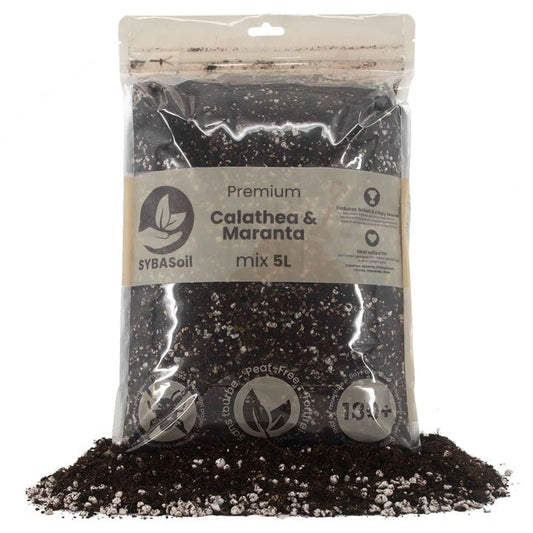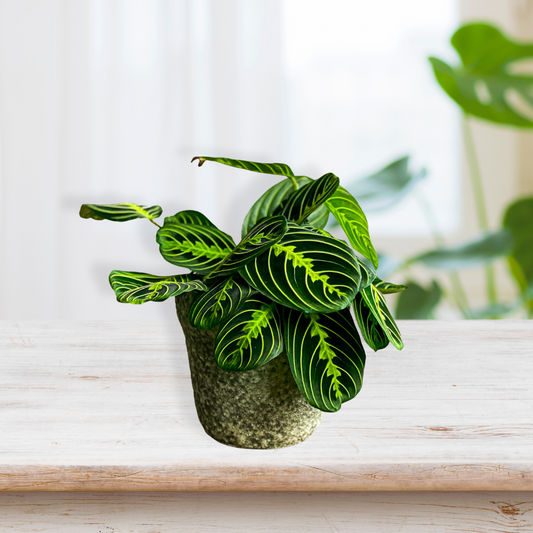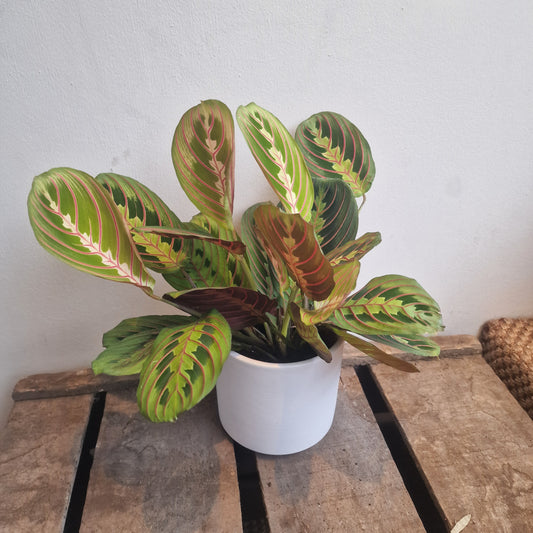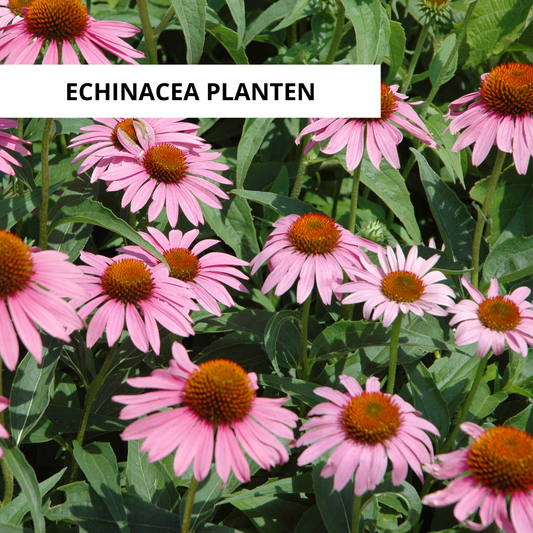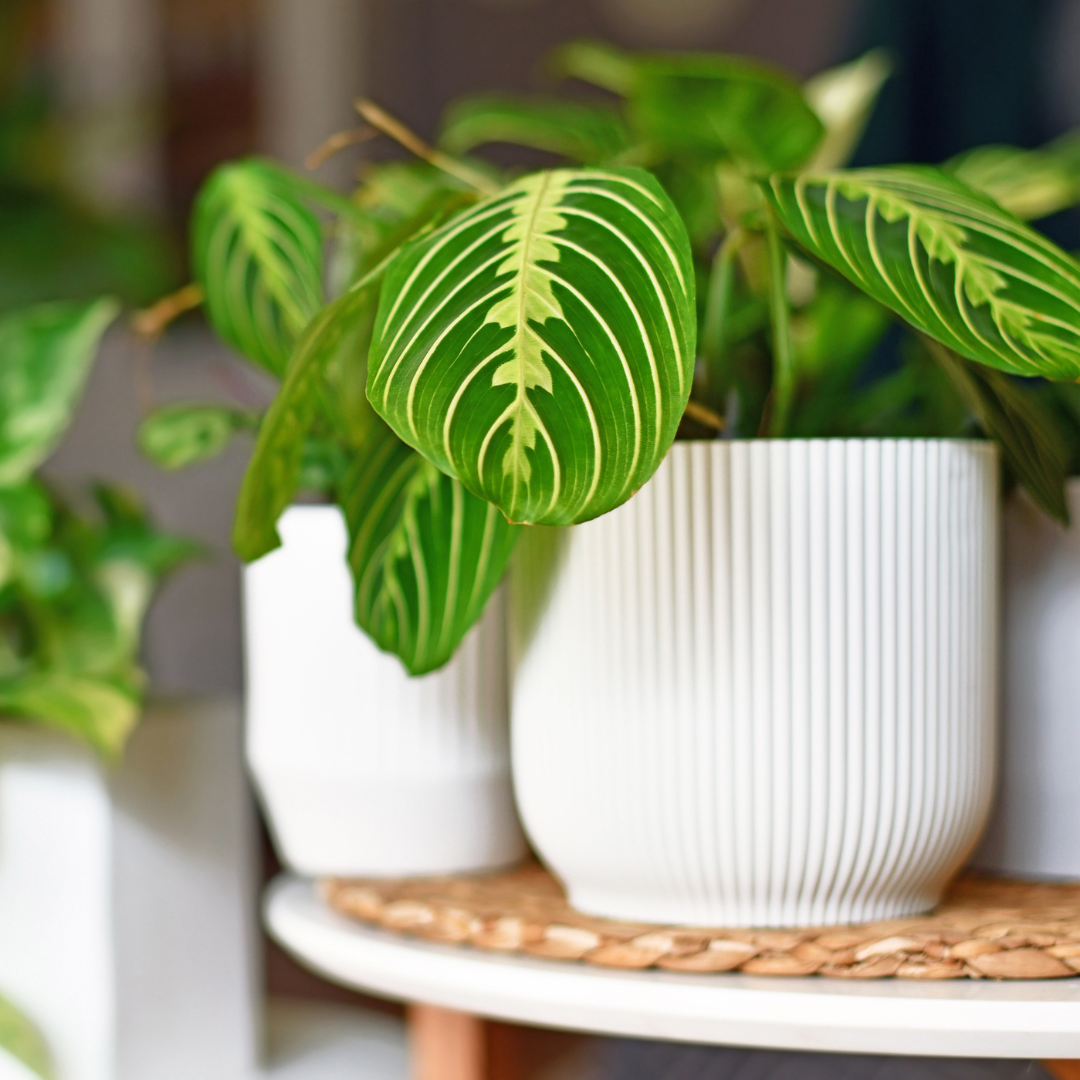
Maranta's care in 2025
Share
Maranta plants, also known as “prayer plants,” are fascinating and mysterious species that have stolen the hearts of plant lovers around the world. With their unique leaf patterns, Marantas are a true wonder of the plant kingdom. In this guide, we’ll explore the origins, characteristics, and types of Maranta plants, as well as provide valuable tips on their care, propagation, and fun facts.
The Maranta family
Maranta plants belong to the family Marantaceae, which includes about 30 species of plants native to the tropical regions of Central and South America. These plants are known for their striking leaves, which often have intricate patterns, vibrant colors, and unique shapes. The leaves of Maranta species are often oval or lance-shaped, and many of them have prominent veins, a variegated leaf pattern as features, which contribute to their aesthetic appeal to people. One of the most intriguing features of Maranta plants is their responsive behavior, where the leaves curl up at night, like hands in prayer, hence the name "prayer plants." This behavior has also led to Maranta species being associated with spirituality, meditation, and mindfulness in various cultures.
Light and location of the Maranta
Maranta plants thrive in bright, indirect light. They like bright ambient light, but avoid direct sunlight, as this can burn the leaves. Place your Maranta plant in a location where it will receive bright light, but not direct sunlight. A spot near an east- or west-facing window is often ideal. In the tropics, where they grow naturally, there is always strong filtered light due to the thick canopy of leaves above.
The ideal temperature of the Maranta
Maranta plants are native to tropical regions and thrive in warm temperatures. The ideal temperature for Maranta plants is between 18 and 24 degrees Celsius during the day, and no lower than 15 degrees Celsius at night. Make sure your Maranta plant is protected from drafts and cold air currents, as they can be sensitive to temperature fluctuations.
Watering your Maranta
It is important to water your Maranta plant moderately and consistently. Keep the soil evenly moist, but not soaked. Allow the top inch of soil to dry slightly between waterings to prevent the plant from becoming too wet. Preferably use soft water without chlorine, fluoride or minerals to help your Maranta plant. Rainwater is best, especially if your tap water contains a lot of lime.
Humidity for Maranta's
Maranta plants like a humid environment, as they naturally grow in tropical rainforests where humidity is high. Provide a humidity of at least 50% around your Maranta plant.
You can increase the humidity by regularly spraying with water, using a humidifier or placing a dish of water near your plant. It is also a good idea to place your Maranta plant on a saucer with pebbles and water to increase the humidity around the plant. More tips on increasing humidity?
Repotting and potting soil for the Maranta
Maranta plants prefer well-drained, rich, and slightly acidic soil. Use at least a high-quality houseplant potting mix mixed with perlite or vermiculite to improve drainage. It is important to avoid allowing the soil to dry out completely between waterings, but also to avoid keeping the soil too wet, as this can lead to root rot .
We have specific potting soil for the Maranta family
Feeding your Maranta
Maranta plants require regular fertilization to thrive. Use a balanced liquid houseplant fertilizer, preferably one with a low nitrogen content. Fertilize your Maranta plant once a month during the growing season (spring and summer), reducing the frequency during the winter months when the plant is dormant. Follow the directions on the package for proper dosage and application.
Maranta or Calathea: which is it?
Calathea and Maranta are two separate genera within the Marantaceae family, but are often confused due to their similar appearance. Although they are both known for their beautiful chlorophyll, there are some notable differences between these two plants.
First, Maranta plants usually have oval leaves, while Calathea plants can have different leaf shapes , such as round, oval, and lance-shaped, depending on the species. In addition, Maranta plants tend to grow low and are suitable for hanging pots, while Calathea plants have an upright growth habit and can grow well in a pot.
Another difference can be seen in the leaf ornamentation . Maranta plants often have distinct vein and rib markings on their leaves, while Calathea leaves are often decorated with patterns that appear to be painted on, such as on the rattlesnake plant. It is also important to note that while both are often referred to as 'prayer plants', only Maranta plants are considered true 'prayer plants'.
In terms of growing conditions , both Calathea and Maranta like low light and medium humidity. However, they can occasionally suffer from insect infestations, which can be treated with alcohol wipes or horticultural oil sprays. Despite being somewhat demanding, they can thrive and display beautiful foliage once they are established and content in a corner of the home.
All in all, Calathea and Maranta are similar yet different plants in terms of leaf shapes, growth forms, and leaf ornamentation. With the right care, they can both be a beautiful addition to a plant collection for lovers of interesting chlorophyll. What types of Maranta are there? You can read about that below.
Types of Maranta
Maranta Lemon Lime, Maranta Fascinator and Maranta Kerchoveana Variegata are just a few of the many beautiful varieties within the Maranta genus. Prayer plant, Ten Commandments plant, call them what you will!
Maranta Lemon Lime

Maranta Lemon Lime is a striking variety with bright lime green leaves that contrast beautifully against the dark green background. The leaves have clear vein markings and a slightly curled tip, giving the plant a playful look. Maranta Lemon Lime thrives in low to medium light conditions and requires average humidity to maintain its vibrant colors.
Maranta Fascinator Tricolor

Maranta Fascinator is another unique variety with leaves that resemble the wings of a butterfly. The leaves have an intricate pattern of vein markings that resemble a fascinating work of art. The colors range from dark green to purplish green, and the plant has a compact growth habit, making it perfect for smaller spaces.
Maranta Kerchoveana
Maranta Kerchoveana Variegata is a beautiful variety with variegated leaves. The leaves have a combination of green and cream stripes that create a striking contrast. This variety also has a compact growth habit and thrives in low to medium light conditions.
The Maranta cuttings
- Choose a healthy Maranta plant with strong roots: Select a mature Maranta plant with healthy, strong roots. Make sure the plant is growing well and has no visible diseases or pests.
- Prepare a clean, sharp pair of pruning shears: Make sure you have a clean, sharp pair of pruning shears to cut the tuber or side stem of the Maranta plant. This will help minimize the chance of infection and make a clean cut.
- Cut off a healthy corm or side stem: Choose a healthy corm or side stem from the Maranta plant and carefully cut it off with the pruning shears. Make sure the corm or side stem has at least one or two leaves and enough roots to grow independently.
- Place the root ball or side stem in a glass of water or cutting station : Place the cut root ball or side stem in water, making sure the bottom is submerged. This will help new roots grow.
- Wait for new roots to grow: Leave the tuber or side stem in the water and wait patiently for new roots to grow. This will usually happen within 1-2 weeks, depending on the conditions and health of the plant.
- Plant the corm or side stem in well-draining potting soil: Once sufficient new roots have grown, the corm or side stem can be planted in a pot with well-draining potting soil. Make sure that the leaves remain above the ground and the roots are well covered. You can use perlite , spaghnum moss or potting soil for calatheas and marantas for this.
- Water regularly and provide sufficient light: Water the new Maranta plant regularly, but avoid overwatering to prevent root rot. Place the pot in a bright spot, but avoid direct sunlight. Also provide a warm and humid environment to promote the growth of the new plant.
Common problems with the Maranta
Yellow leaves on the Maranta
One of the most common causes of yellow leaves on Maranta plants is over-watering. Maranta plants prefer slightly moist soil and can be susceptible to root rot if watered too often or too much. Over-watering can lead to a build-up of moisture in the roots, which can cause the leaves to turn yellow. It is important to allow the soil to dry out thoroughly between waterings and to make sure the plant is in a well-draining potting mix to prevent root rot and yellow leaves. In addition to over-watering, other factors such as too much direct sunlight, low humidity, nutrient deficiencies, or pests can also cause yellow leaves on the Maranta plant.
Brown edges on the Maranta
A common cause of brown edges is air that is too dry. Maranta plants are tropical plants that thrive in an environment with high humidity. If the humidity in the area around the plant is too low, the leaf edges can dry out and turn brown. It is important to increase the humidity around the plant by spraying regularly, using a humidifier or placing a bowl of water near the plant.
Bugs on my maranta
Yellow dots on the leaves of a Maranta plant can have several causes. A common cause is a thrips infestation. Thrips are small insects that feed on plant juices and can manifest themselves as yellow dots on the leaves of the Maranta. These yellow dots can later develop into brown spots, making the leaves look unhealthy and damaged.
In addition, yellow spots can also be the result of damage to the leaves, for example due to physical damage, aging or improper care. Damaged leaves can turn yellow and show spots as a result of tissue death.
Wilted leaves on my Maranta
Maranta plants need high humidity and are sensitive to drying out. If the plant is dry for too long, the leaves can wilt and look limp.
Another possible cause of wilted leaves on a Maranta plant is overwatering. Although these plants like a humid environment, they do not do well with too much water. Overwatering can lead to waterlogging of the roots, which can result in wilting of the leaves and even root rot .
Root rot in the Maranta
Root rot is usually caused by overwatering, where the plant's roots are exposed to moisture for too long. This can lead to root death and the plant's inability to absorb sufficient water and nutrients, resulting in wilted leaves.
To treat root rot in a Maranta plant, it is important to address the cause, which is overwatering. First, the plant should be removed from the overly moist soil and the affected roots removed. Healthy roots can be preserved, but it is important to carefully cut away any rotten or affected areas to prevent further spread of the rot.
The Maranta plant should then be repotted in fresh, well-draining potting soil to prevent the roots from being exposed to too much moisture again. Watering should be adjusted to prevent overwatering. It is important to check the soil regularly for moisture and only water when the top layer of soil feels dry.
In addition, it is important to optimize environmental factors to promote root health. This includes ensuring good air circulation around the plant, avoiding temperatures that are too high or too low, and ensuring appropriate humidity by, for example, using a humidifier or placing a saucer of water next to the plant.
No new leaves on the Maranta
There can be several reasons why a Maranta plant does not produce new leaves. One of the most common reasons is insufficient light. Maranta plants thrive in bright, indirect light and need sufficient light to produce new leaves. If the plant does not receive enough light, this can lead to a lack of growth and the absence of new leaves.
Another possible cause could be an unsuitable temperature or humidity. Maranta plants are tropical plants and thrive best in warm temperatures between 18-24 degrees Celsius and a humidity of 50-60%. If the environmental conditions are not suitable, this can hinder the growth of new leaves.
In addition, improper watering can also affect the growth of new leaves in a Maranta plant. Overwatering or drying out the soil can lead to stress for the plant and the absence of new leaf growth.
Brown leaf tips on the new leaves
This is most likely due to low humidity. Maranta plants are tropical plants that thrive in high humidity. When the humidity in the environment is too low, the leaf tips of the new leaves can dry out and turn brown.
Another possible cause of brown leaf tips on new leaves is improper watering. Overwatering can lead to root rot and eventually brown leaf tips on new leaves. In addition, using hard water with a high salt or lime content can cause brown leaf tips.
Maranta closes its leaves

This is normal, don't worry!
The Maranta, is known for its unique leaf movements where the leaves close at night or when exposed to darkness. This phenomenon, called nyctinasty, is a fascinating aspect of Maranta plants that intrigues many plant lovers.
The mechanism behind the closing of leaves in Maranta plants is attributed to specialized cells called pulvini, which are located at the base of each leaf. Pulvini are small, swollen areas of the petiole that contain motor cells capable of rapid movement. These motor cells are sensitive to changes in light and temperature, and respond by contracting or expanding, causing the leaf to move.
During the day, when Maranta plants are exposed to light, the motor cells in the pulvini expand, causing the leaves to spread out and expose a larger surface area for photosynthesis. However, when light levels decrease in the evening or when the plant is exposed to darkness, the motor cells in the pulvini contract, causing the leaves to close. This folding or closing of the leaves is believed to serve as a protective mechanism to reduce water loss through transpiration and protect the plant from potential damage caused by low light or cold temperatures at night.
In addition to the functional aspect, the closing of the leaves also contributes to the aesthetic appeal of Maranta plants, making them popular with plant enthusiasts. It is important to note that not all Maranta species exhibit such leaf movements, and the extent and timing of leaf closing can vary between different species and environmental conditions.
Leaf closing in Maranta plants is a unique and intriguing phenomenon attributed to specialized motor cells in the pulvini. This movement allows the leaves to close in response to changes in light and temperature, serving both functional and aesthetic purposes.
The Maranta is a fantastic plant with characteristics that appeal to the imagination. It is not super easy, but rewards the care with incredibly beautiful leaves.

